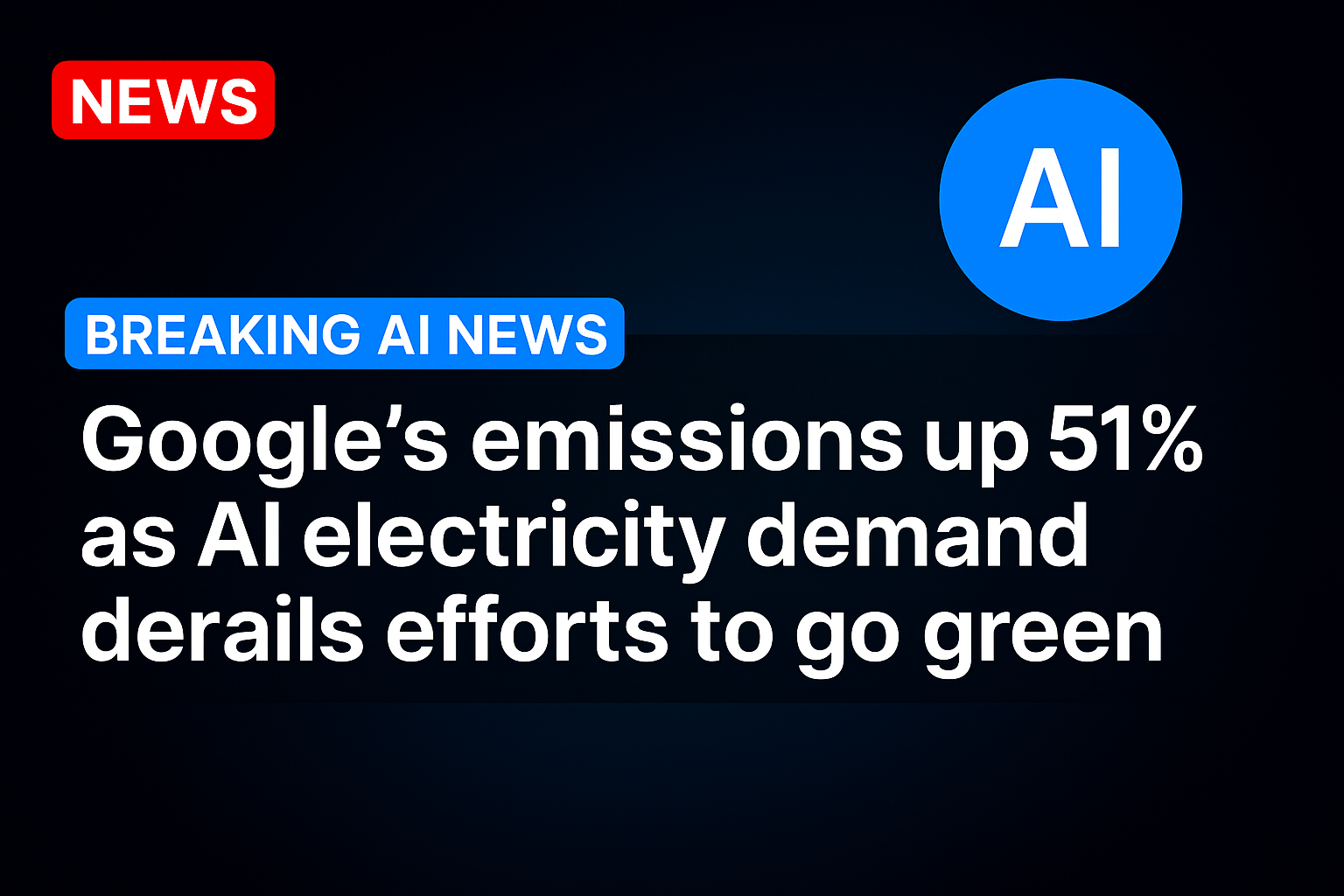Google’s carbon emissions have increased by 51% since 2019, as artificial intelligence is hindering the tech company’s efforts to transition to clean energy, The Guardian reports.
While the corporation has invested in renewable energy and carbon removal technologies, it has failed to curb its scope 3 emissions, which are those further down the supply chain and are largely impacted by the increased data center capacity needed to power artificial intelligence.
The company reported a 27% increase in annual electricity consumption, as it struggles to decarbonize as quickly as its energy needs are growing.
Data centers play a key role in training and operating the models behind artificial intelligence like Google’s Gemini and OpenAI’s GPT-4, which powers the ChatGPT chatbot.
The International Energy Agency estimates that total electricity consumption by data centers could double from 2022 levels to 1,000 TWh (terawatt-hours) by 2026, roughly the size of Japan’s electricity demand.
According to calculations by research firm SemiAnalysis, artificial intelligence will lead to data centers using 4.5% of global energy production by 2030.
The report also expresses concern that the rapid evolution of artificial intelligence could cause “non-linear growth in energy demand,” making it more difficult to predict future energy needs and emissions trajectories.
Another issue that Google highlights is the lack of progress in new forms of low-carbon energy production.
Small Modular Reactors (SMRs), miniature nuclear power plants that are supposed to be easily built and connected to the grid, have been hailed as a way to decarbonize data centers.
There were hopes that areas with many data centers could have one or more SMRs and this would reduce the large carbon footprint from the electricity these centers use, which is increasingly in demand due to the use of artificial intelligence.
The report said these are off-target: “A key challenge is the slower than necessary deployment of carbon-free energy technologies on a large scale, and achieving this goal by 2030 will be very difficult.
While we continue to invest in promising technologies such as advanced geothermal energy and SMRs, their large-scale deployment has not yet been achieved because they are in their early stages, relatively costly, and poorly supported by the current regulatory structure.”
The report adds that category 3 remains a “challenge,” as Google’s total emissions based on its targets were 11.5 million tons of carbon dioxide-equivalent gases, representing an 11% annual increase and a 51% increase compared to the 2019 base year.
This was “driven primarily by increased emissions in the supply chain” and scope 3 emissions increased by 22% in 2024.
Google is racing to buy clean energy to power its systems, and since 2010, the company has signed over 170 agreements to purchase more than 22 gigawatts of clean energy.
In 2024, 25 of them came online, adding 2.5 GW of new clean energy to its operations.
It was also a record year for clean energy deals, with the company signing contracts for 8 GW.
The company has met one of its environmental goals ahead of schedule: eliminating plastic packaging.
Google announced today that packaging for new products launched and manufactured in 2024 was 100% plastic-free.
The goal was to achieve this by the end of 2025.
In the report, the company also said that artificial intelligence could have a “net positive potential” for the climate, because it hopes that the emissions reductions enabled by its applications will be greater than the emissions generated by the artificial intelligence itself, including its energy consumption from data centers.
Google aims to help individuals, cities, and other partners collectively reduce 1 GT (gigaton) of their carbon-equivalent emissions per year by 2030 using its artificial intelligence products.
These, for example, can help predict energy use and thus reduce waste, as well as map the solar potential of buildings so that panels can be placed in the right place and generate maximum electricity.





